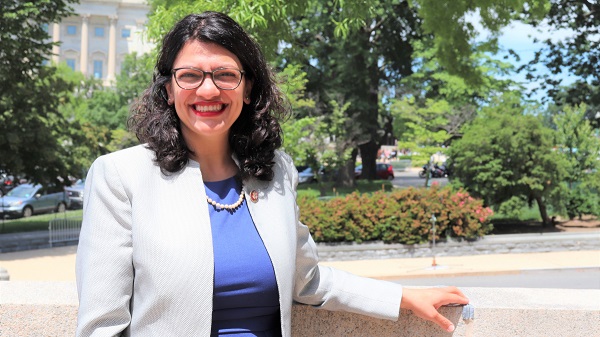In April of this year, the End Child Poverty Act (ECPA) was reintroduced in Congress. The ECPA is a child allowance proposal that would replace the current intricate system of family tax credits with a simple, universal child benefit. The ECPA has the potential to help millions of families and significantly reduce child poverty. However, the ECPA has yet to receive a detailed analysis that estimates its cost and impact. That is until now. Recently, I collaborated with Max Ghenis, Founder of PolicyEngine, to create an in-depth analysis of the ECPA for 2023. Using PolicyEngine, Max and I were able to determine the program’s cost and effects on household income, poverty and inequality. This comprehensive evaluation sheds light on the true potential of the ECPA.
Cost
In the analysis, all the components of the ECPA were considered. The ECPA simplifies the existing tax system by abolishing the Earned Income Tax Credit (EITC) and the Child Tax Credit (CTC). It establishes a credit of $600 for single filers and $1,200 for joint filers, phasing out gradually at $20,000 and $40,000, respectively. The ECPA also includes a $600 credit for adult dependents. When these policies are combined, the net budgetary effect is $111.8 billion in increased tax revenue.
The primary component of the ECPA is the universal child benefit. For 2023, every child from 0 to 18 will receive $5,140 a year ($428 a month). This alone would cost $382.1 billion. Therefore, the overall cost of the ECPA for 2023 is $270.3 billion. While this may seem like a steep cost, it only represents about 1% of annual GDP. For context, the U.S. spends more than 3% of its annual GDP on the military. For a relatively modest cost, the ECPA has some astounding distributional effects.
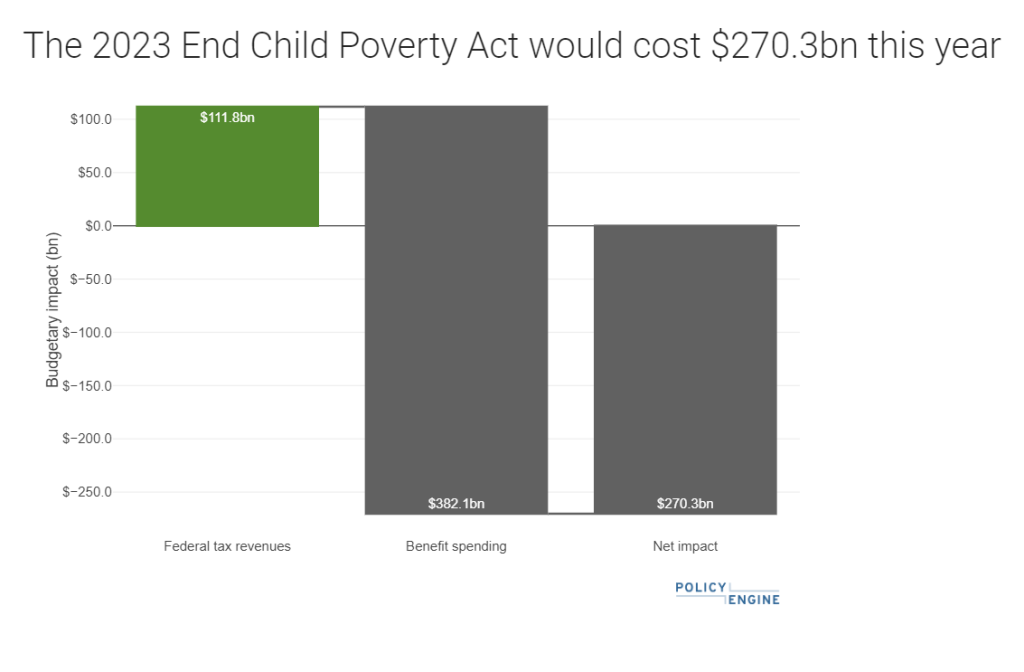
Household Impact
The ECPA would increase household incomes across every decile, with most families seeing a 5% or more increase in their net incomes. Families with little or no income would benefit significantly compared to the existing system. Since EITC and CTC benefits currently phase in based on earnings, a single parent with one child and no earnings receives no assistance from either credit. But under the ECPA, they would receive $5,140 from the universal child benefit and an additional $600 from the single filer credit (assuming they file their taxes). As a result, their income would soar by $5,740 compared to the status quo. This aid towards families with no income helps explain the staggering reduction in poverty that would occur under the ECPA.

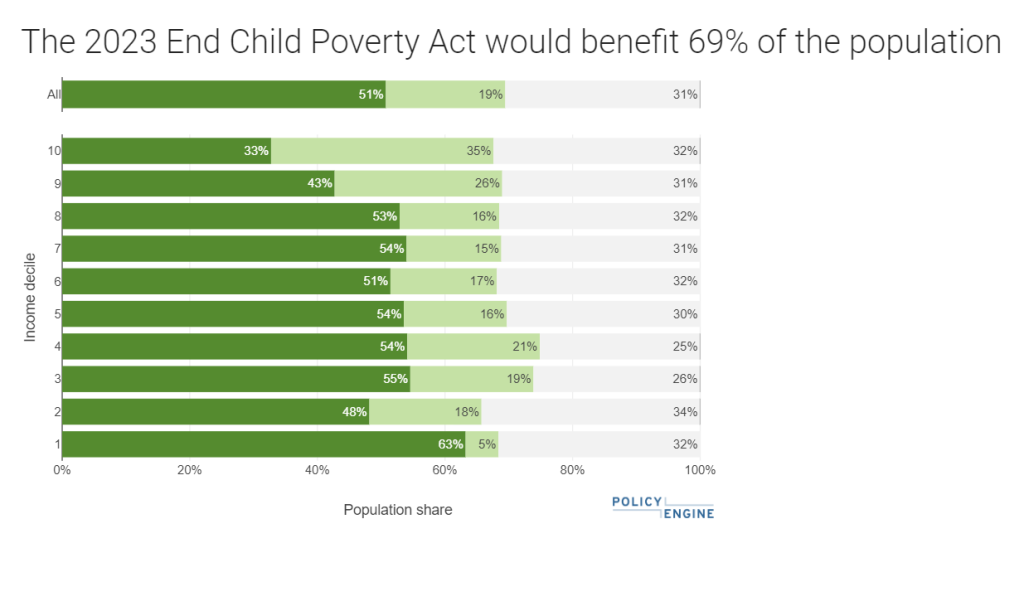
Poverty Reduction
While the primary goal of the proposal is to alleviate child poverty, it also does a great job of lowering poverty in general. The ECPA would reduce poverty by 26.2% and deep poverty by 32%. The Supplemental Poverty Measure (SPM) would see its lowest rates on record. Black and Hispanic poverty would also decrease by 30.3% and 32.6%, respectively. However, the decline in child poverty is obviously where this proposal shines the brightest. The ECPA would reduce child poverty by 60.7%, lowering the SPM child poverty rate from 8.2% to 3.2%. This exceeds the 46% reduction in child poverty that occurred in 2021, which was mainly attributed to the enhanced CTC. Furthermore, deep child poverty would decrease by a whopping 93.2%. The ECPA cuts the SPM deep child poverty rate to just 0.1%! The ECPA would lift tens of millions of people out of poverty.
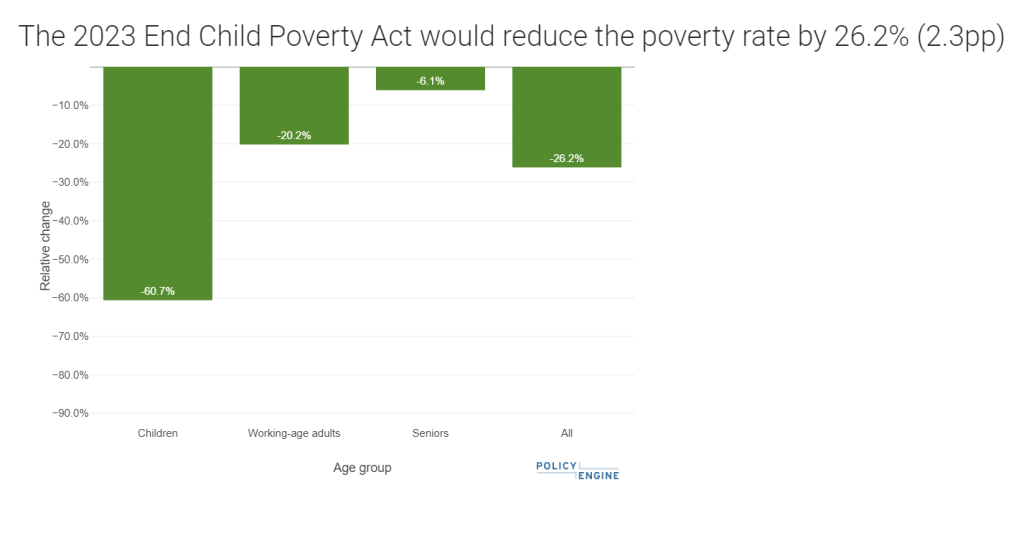
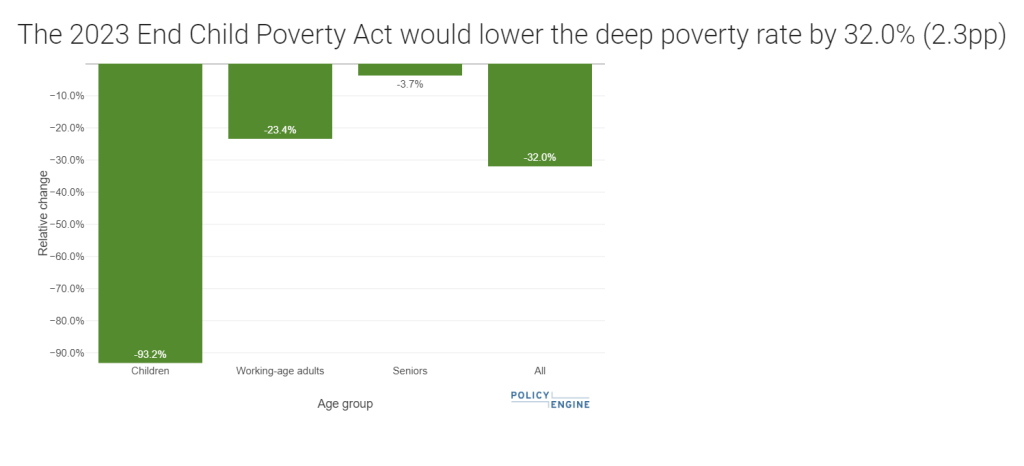
Inequality
Finally, the ECPA reduces income inequality. Under the ECPA, the Gini index would fall by 3.6%, dropping from 40.6 to 39.2. While this seems like a minimal dip, it’s important to note that the Gini index would reach its lowest level since 1992 under the ECPA. If the ECPA is paired with progressive taxation, income inequality would fall even more. The ECPA would also lower the percent of total income held by individuals in the top 10% and 1% of households.

Conclusion
The End Child Poverty Act was already a good proposal. It is elegantly designed and would provide benefits to the poorest families, unlike the current system. However, after conducting the analysis, it is evident that the ECPA would substantially benefit millions of families, cut poverty to unprecedented levels and reduce income inequality to a 30-year low. It is undoubtedly the best child allowance proposal currently introduced in Congress, and now, it has the numbers to back it up. If the ECPA were signed into law, it would go up with Social Security as one of America’s best poverty reducers. I urge Democrats to coalesce around the ECPA. The enhanced CTC in 2021 was good, but the ECPA is better. But don’t take my word for it; just look at the numbers.

